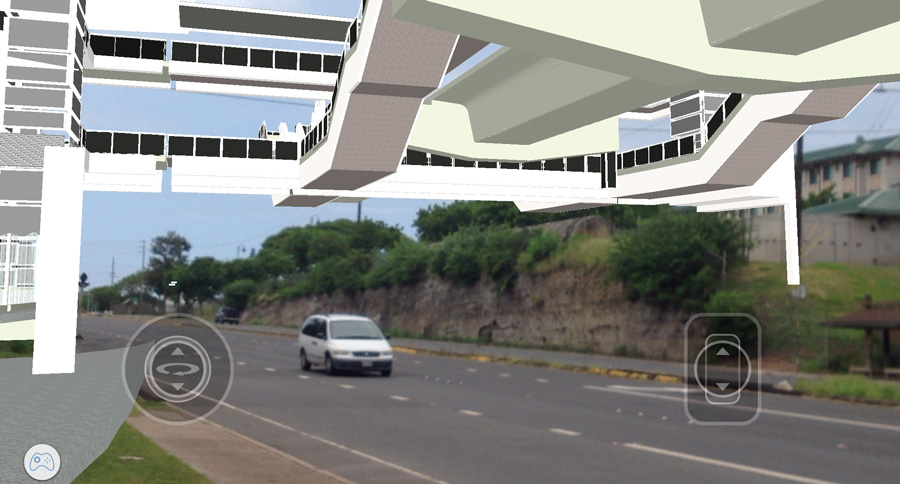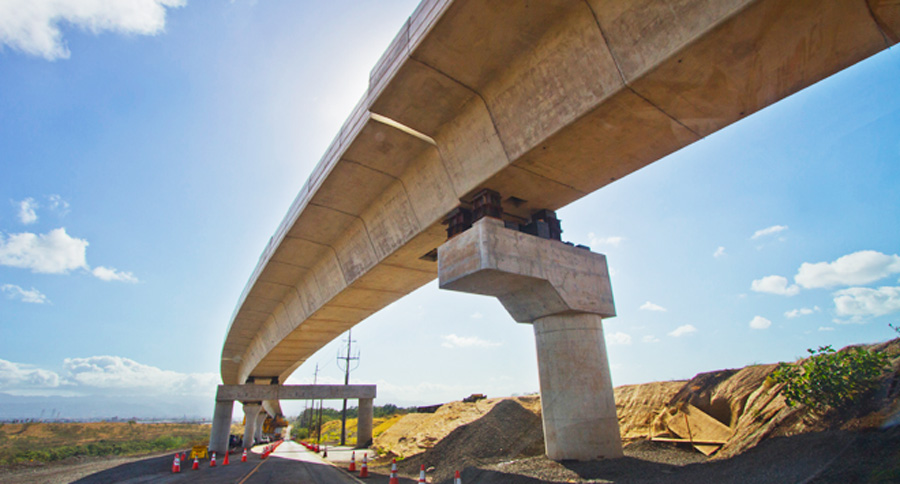
The Honolulu Authority for Rapid Transportation (HART) is building America’s first fully automated urban light metro rail system, a 20-mile stretch of rail that will carry passengers from West O’ahu to downtown Honolulu.
Looking for seamlessly integrated design and delivery to match the innovation of the driverless transit system, HART turned to Parsons for phase three of the project.
Parsons engineers collaborated with Autodesk, an engineering software company, to utilize augmented reality (AR) technology to better visualize the design and placement of the rail system in the field. Virtual models of the rail line and stations were superimposed on the landscape where they would eventually be built, allowing designers to easily confirm existing and proposed utility locations, and review changes with stakeholders live at the project site.
The HART project was among the first times Parsons ever used AR technology to visualize transit design,” said Kevin O’Connor, PE, xD infrastructure services manager for Parsons. “Equipped with an iPad and data inputs, we could see exactly where the structure would go, and make design adjustments well before the building phase began.”
In one instance, the rail line was intended to go through the parking lot of the local post office. Reviewing the plans in the field, the stakeholders at the facility brought up concerns – the parking lot in question was already slated for other development. The Parsons team used this feedback to quickly modify the design before it impacted the project schedule.

“We’re now using AR on many of our projects, particularly in the vertical design space,” added O’Connor. “The technology has improved rapidly, making it possible to lock a design in place and then view the virtual structure from any angle.”
At Parsons, our team incorporates dimensions beyond traditional 2D models – using AR, virtual reality (VR), 3D representations and beyond into “xD”. By considering factors including scheduling, cost, and energy use, as well as maintenance and operation, Parsons provides clients a holistic view of the building life cycle.
The value of seeing a model in real space and time, either with a smartphone, tablet or holographic lens, added efficiency to the design process for the HART system. Advancements in AR, as well as virtual reality (VR) and other modeling techniques, continue to help Parsons keep projects on time and customers on budget.